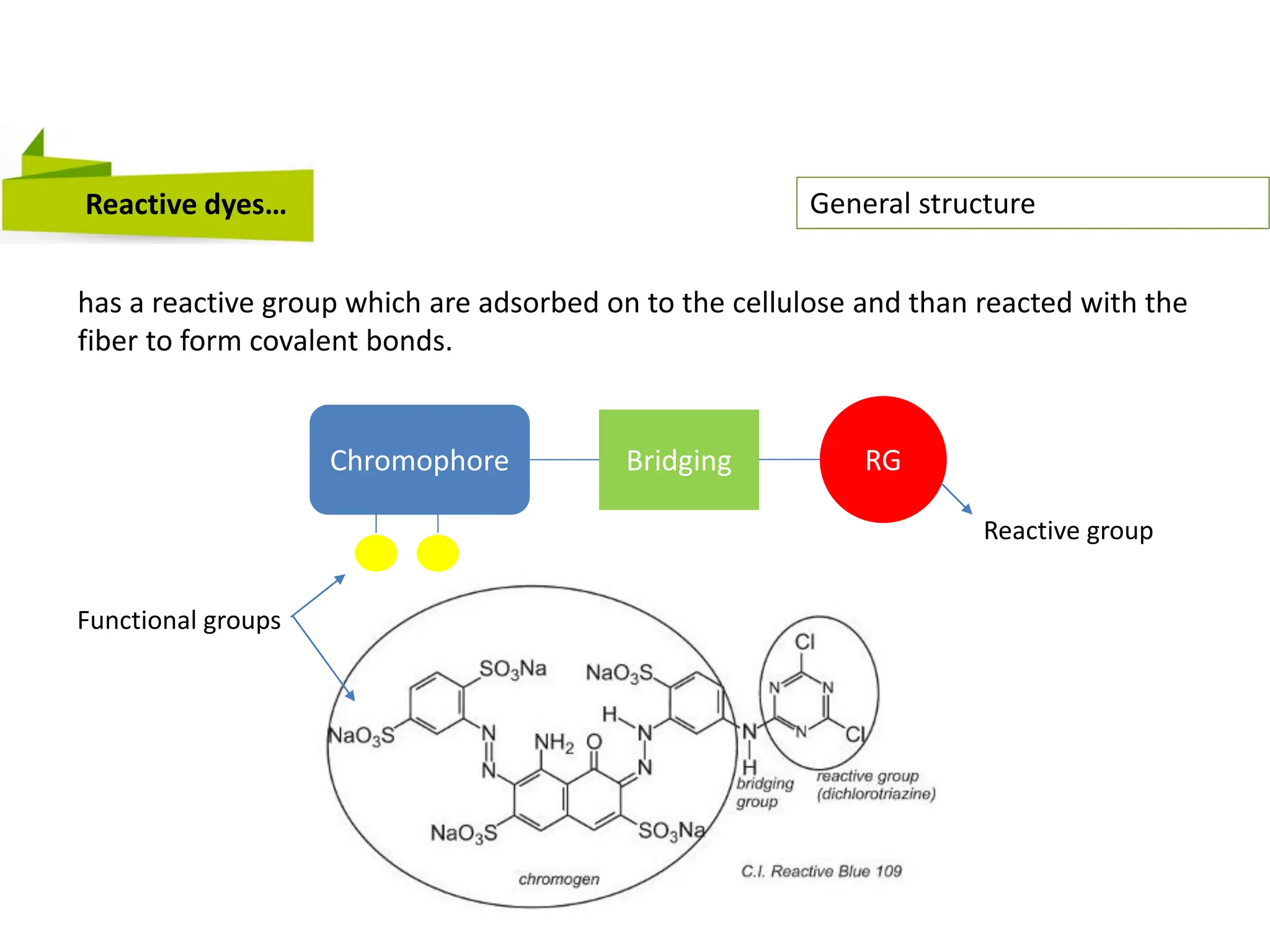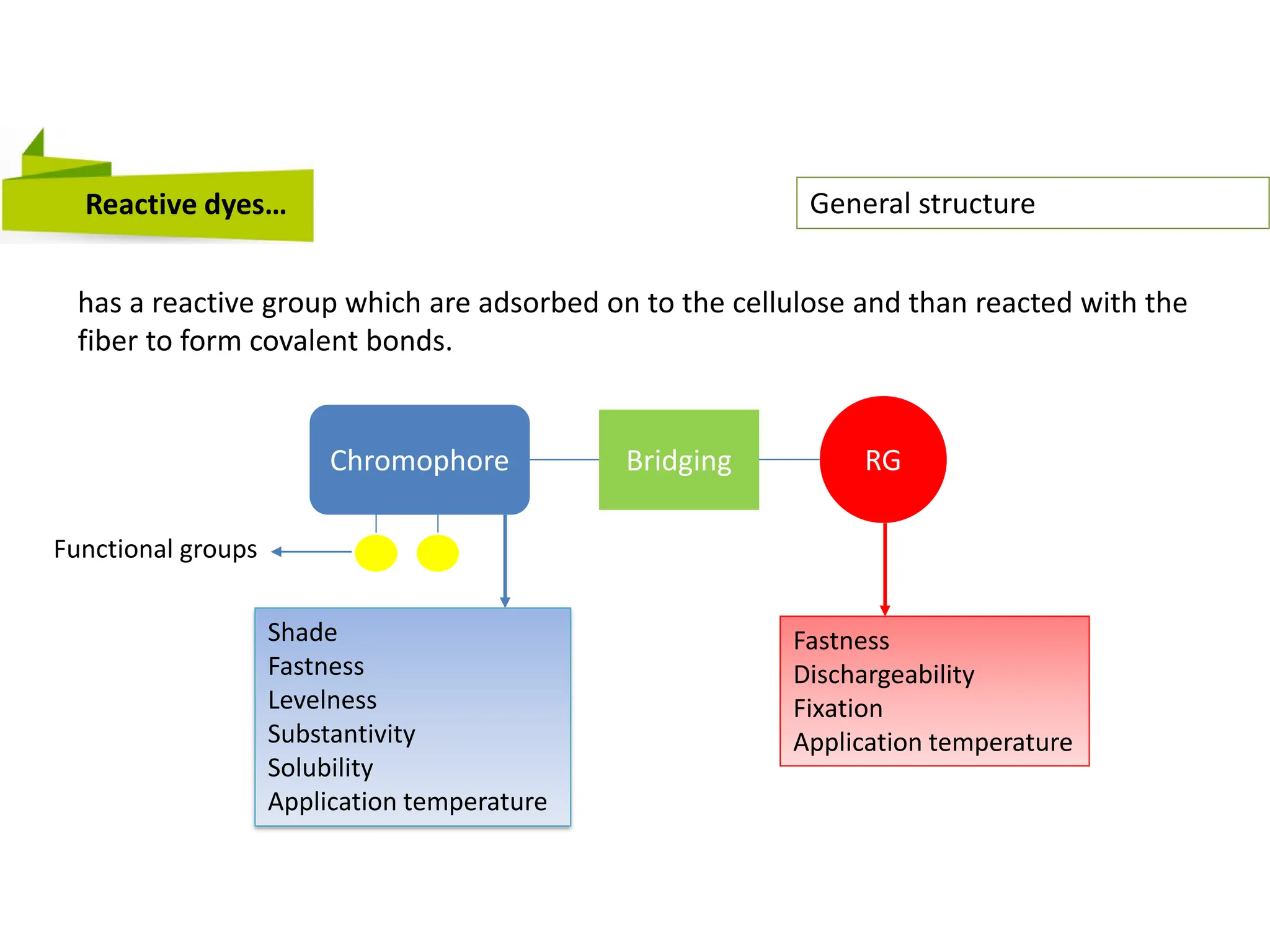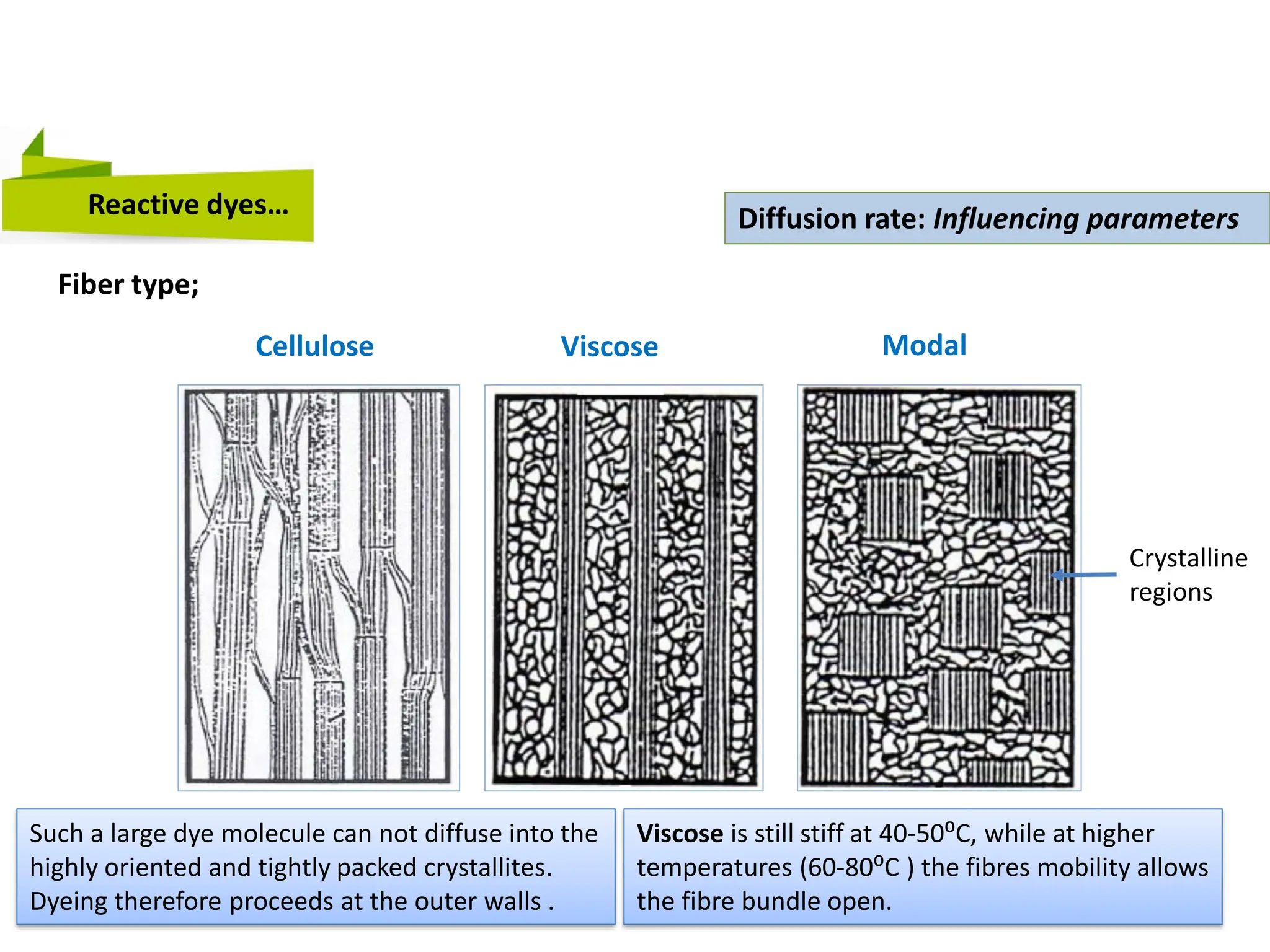1) Reactive dyes form covalent bonds with cellulose fibers through reactive groups on the dye molecules. These bonds make the dye-fiber linkage more resistant to washing than ionic bonds.
2) The dyeing process involves exhaustion of the dye from the bath through adsorption, followed by fixation through reaction of the reactive groups with cellulose under alkaline conditions.
3) Key factors that influence dye diffusion and fixation include temperature, electrolyte concentration, dye structure, fiber type, and dye substantivity. Proper washing is also important to remove unfixed dye residues.







![Reactive dyes… Exhaustion
The reactive dyes is adsorbed onto the cellulose surface and than diffuses into the fiber.
This phase is fully reversible.
Dye molecules are in equilibrium between fiber and dyebath.
Any change in bath composition
affect the equilibrium
[F] Dyebath [F] Cellulose
So; affect the Substantivity
S=
[F] Cellulose
[F] Dyebath](https://image.slidesharecdn.com/reactive-chemistry-231229044839-7fb8eceb/75/reactive-chemistry-pdf-8-2048.jpg)




![Reactive dyes… Substantivity: Influencing parameters
Dye concentration;
Because of the limited adsorption
capacity of fiber surface;
S=
[F] Cellulose
[F] Dyebath
Dye concentration Substantivity
Surface saturation occurs later with high affinity dyes
than low affinity dyes so,
the greater influence on substantivity of low affinity
dyes](https://image.slidesharecdn.com/reactive-chemistry-231229044839-7fb8eceb/75/reactive-chemistry-pdf-13-2048.jpg)









































